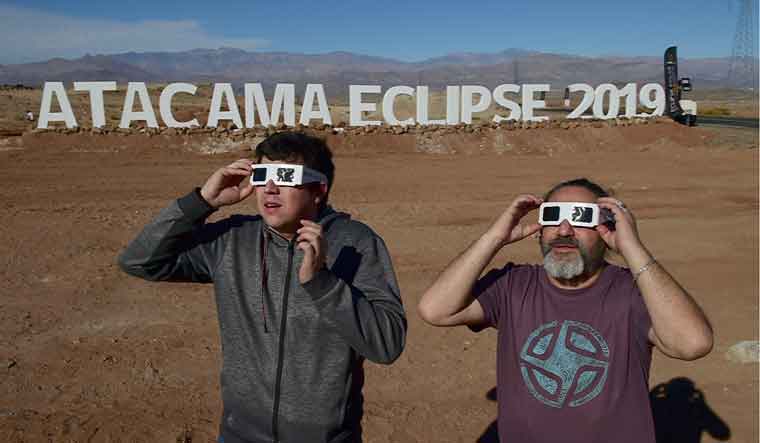Sky gazers around the world are set to witness a total solar eclipse—the only one this year—on July 2. Here's all you need to know if you don't want to miss today's once-in-a-year phenomenon.
What is a total solar eclipse?
Solar eclipses happen when the Moon passes directly between the Sun and Earth, casting its shadow onto Earth’s surface. Because the Moon’s orbit is not perfectly in line with the Sun and Earth, its shadow usually passes above or below Earth. But when it lines up just right, we get a solar eclipse. People in the inner part of the Moon’s shadow—the umbra—can witness a total solar eclipse, while those in the outer part of the shadow—the penumbra—experience a partial solar eclipse.
Today's total solar eclipse
The rare "total solar eclipse" that will be witnessed on July 2 is all set to plunge the landscape of the South Pacific, Chile and Argentina into darkness. Today's total solar eclipse will last for a total of four minutes and 33 seconds.
¿Están listos? Are you ready? ☀️ 🌑 🌎
— NASA (@NASA) July 1, 2019
A total solar eclipse will be seen over parts of Argentina and Chile tomorrow and we're covering it live in English & Spanish. Here's how you can watch: https://t.co/xaxZcvNXkH pic.twitter.com/DLu3I6fWtl
The eclipse will be going through a 6,800-mile path, but only a narrow zone of the Pacific Ocean and South America comes in the path of totality. Most of the path is over the open ocean.
This means that people from only a few countries will be able to witness it directly.
How to watch the eclipse?
Take note that it is never safe to look directly at the uneclipsed or partially eclipsed Sun. You will need special solar viewing glasses or an indirect viewing method, like pinhole projection, to watch the eclipse.
also read
Timing in India
The partial eclipse will start at 10:25 pm IST. While the eclipse will not be visible from India, enthusiasts have a number of streaming options to not miss the same. The full eclipse will begin at 11:31 pm on July 2 and last till 12:52 am on July 3.
However, those want to see can log on to the website of the Exploratorium. The San Francisco-based museum will stream the solar eclipse live all the way from the National Science Foundation’s Cerro Tololo Observatory in Chile. The live stream will kick off at 12:23pm PST (12:53 am India time).
The museum also has a dedicated app for the total solar eclipse on iOS and Android. Users can download the same to watch the live stream of the total solar eclipse.
NASA has partnered with Exploratorium and also will have different livestreams available: Live telescope views without audio from 3pm to 6pm EDT and an English-language programme from 4 to 5pm. The English-language programme will also be available on NASA TV.
Slooh Observatory is presenting a live viewing of the event from on their website, between 3:15pm and 5:50pm EDT. They will also host the event on their Facebook page.


